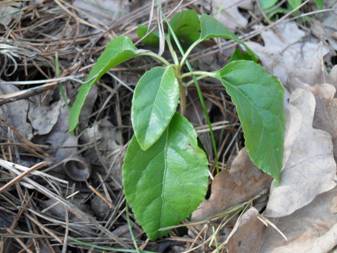
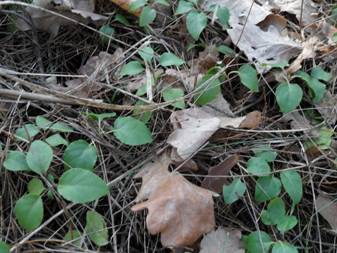
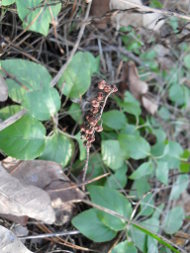
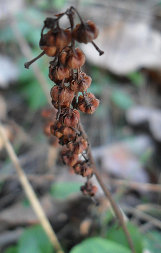
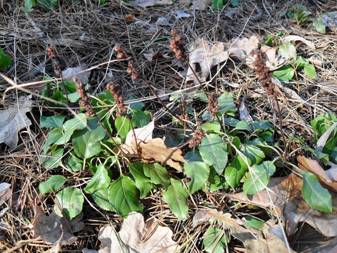

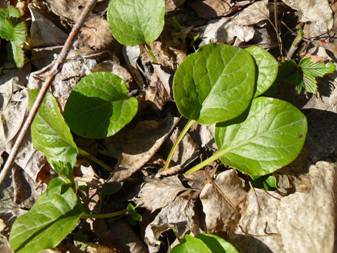
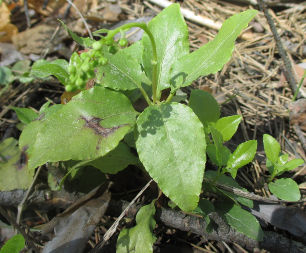
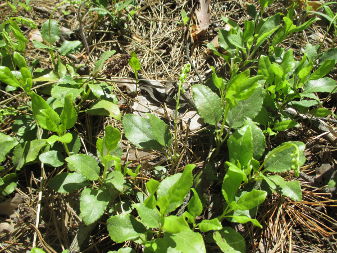
Common Wintergreen (Pyrola), fam. Ericaceae.
To identify the species (among the possible are Pyrola rotundifolia or round-leaved wintergreen, Pyrola minor, or lesser wintergreen, and Pyrola media or intermediate wintergreen), it is necessary to study its flowers carefully, which has not been done yet. The problem is that Wintergreen is readily seen in cold (but snowless) season, when it is standing out of the faded grass and dead leaves with its evergreen low shoots, like one-year seedlings of Pear or Apple. Some of them also hold the fruits – pentahedral boxes with tiny seeds. In summer, however, the wintergreens are lost among the lush herbs. The wintergreen flowers are also similar to pear flowers.
Since the wintergreen seeds are so tiny, its sprouts are too weak for independent development and they need to obtain nutrition from fungi, engaging into symbiosis. A mature plant keeps its dependence on fungi only partially. There are other relatives of wintergreen in our DVRZ/Kyiv forest, which have similar properties – for example, Umbellate Wintergreen; and Dutchman's pipe has completely unlearned to get nutrition itself, and depends on fungi through all its life.
Common Wintergreen is a medicinal plant. An infusion of its dry herb, collected at the beginning of blooming, is used for urinary tract diseases and infertility; it is counterindicated in case of hypotension and increased trombosis predisposition. Antibacterial action of wintergreen is similar to other preparations from the fruits and the leaves of plants of the Ericaceae (Heather) family – cranberries, bilberries, and lingonberries. But it is hard to recommend collecting the wintergreen for that purpose – it grows rarely in our forest, and its action is not very distinct.